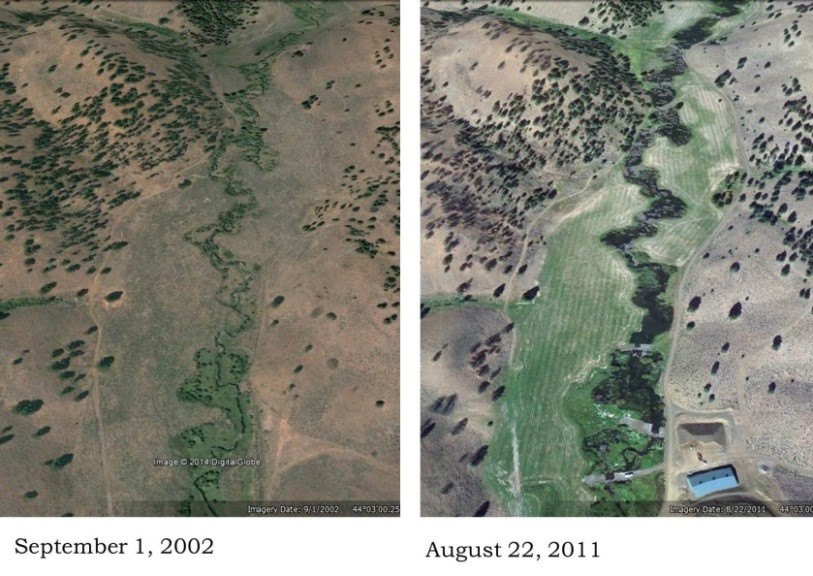In the Northwest ranchers, landowners, and land managers are facing the challenges of a changing climate and are altering their management decisions as a result. Warmer winters and springs can result in reduced snowmelt and more rain than snow in the mountains, reducing water flow in rivers and streams during the growing season. Higher temperatures and changes to precipitation can lead to drought, heat stress to livestock and wildlife, increased pests and disease, and increased wildfires.
The long-term climate projection for the Northwest is for warmer temperatures. Precipitation projections are uncertain, except in Alaska where precipitation is expected to increase especially in the west. With warmer temperatures more precipitation will fall as rain rather than snow, and forage growth, quality and availability will be affected. With warmer temperatures during the summer heat will lead to heat stress on livestock, reducing livestock weight gain.
Climate change is projected to affect forage growth, availability, and quality as well as net primary productivity, although impacts will vary across forage and rangeland types. Active management will be required to reduce risks associated with climate change. Useful management strategies include dynamic grazing practices that are driven by forage availability rather than fixed dates, adoption of drought and heat-tolerant livestock breeds, and more intensive management of invasive species such as cheatgrass that may increase the frequency and extent of fire on rangelands. Such changes will increase production costs because of the need for supplemental feeding and watering and reduce allowable stocking rates.
•Manage grazing intensity to reduce fire risk by lowering fuel loads while avoiding erosion and loss of biological soil function. 
•Protect and restore streams and nearby vegetation to maintain cool stream temperatures and retain water.
•Restore rangelands using native species that can improve soil health and ecosystem function, reduce fire risk, and provide superior forage.
Find additional adaptation resources for rangelands in the Tools page.

